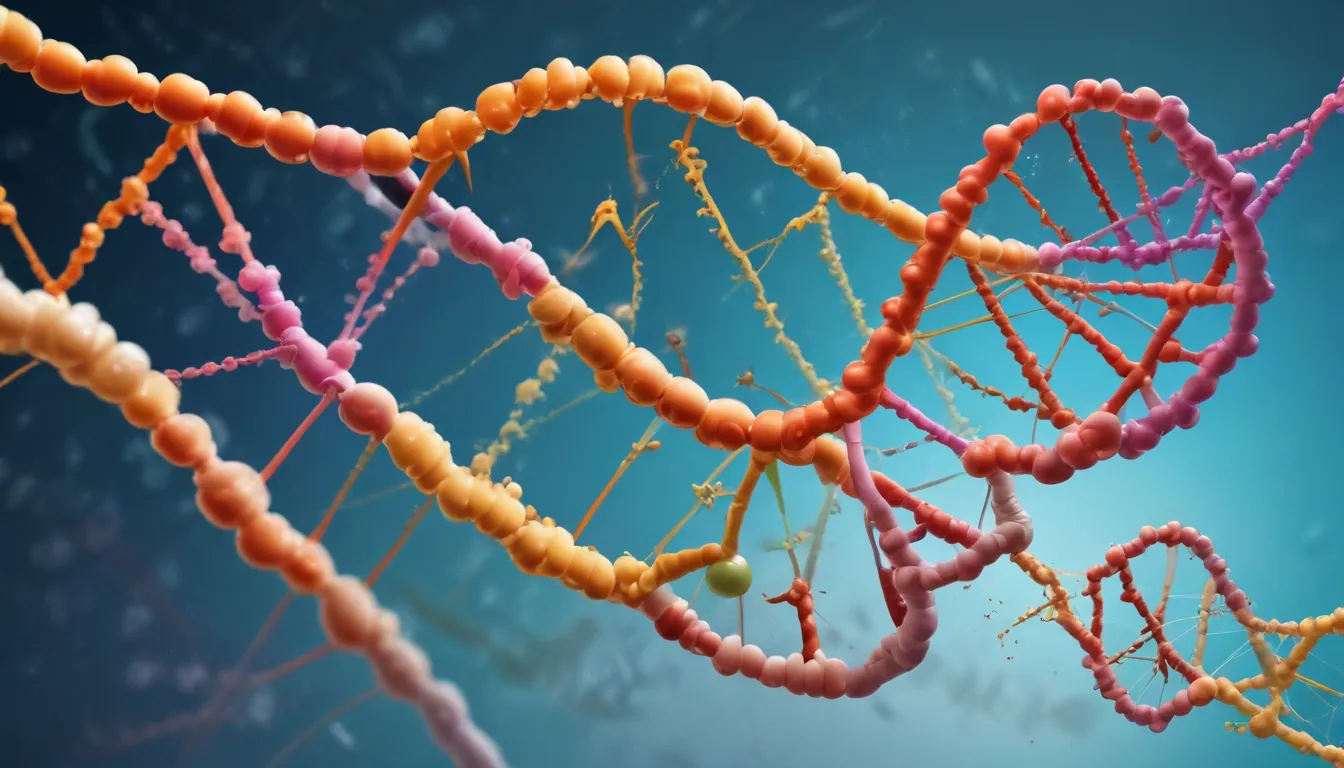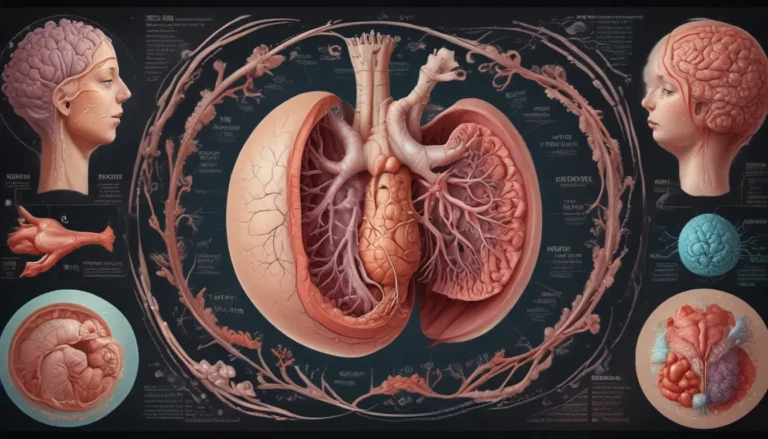A Note About Images: The images used in our articles are for illustration purposes only and may not exactly match the content. They are meant to engage readers, but the text should be relied upon for accurate information.
Non-coding RNAs (ncRNAs) have long been shrouded in mystery, perplexing scientists with their hidden complexity. Once dismissed as mere “junk” by researchers, these enigmatic molecules have now emerged as essential players in a myriad of cellular processes. Unlike their coding counterparts, non-coding RNAs do not directly code for proteins. Instead, they wield powerful regulatory functions by interacting with other molecules within the cell.
In this captivating exploration of the world of ncRNAs, we will uncover 18 intriguing facts that illuminate their profound significance in biological systems. From their pivotal role in gene expression to their involvement in various diseases, non-coding RNAs are far from passive bystanders in the intricate dance of life. So, join us on this fascinating journey as we unravel the mysteries of non-coding RNAs.
Delving into the World of Non-Coding RNAs
Non-coding RNA (ncRNA) is a mysterious and abundant molecule in cells, with diverse functions like gene regulation and disease involvement. It’s like a secret agent inside our cells, influencing how they work and even causing trouble in diseases. Researchers are exploring the potential of ncRNAs for treating diseases, like cancer and Alzheimer’s. It’s like finding a hidden treasure in the cells that could lead to new ways of fighting illnesses.
The Abundance of ncRNAs
Within the intricate landscape of cells, there exist thousands of non-coding RNA molecules, outnumbering protein-coding genes by a significant margin.
Unraveling Diverse Functions
Non-coding RNAs play a multifaceted role in cells, contributing to gene regulation, chromatin remodeling, and cellular signaling.
MicroRNAs: The Gene Expression Maestros
MicroRNAs (miRNAs) are small but mighty ncRNAs that can bind to messenger RNA (mRNA) and regulate gene expression by either blocking protein synthesis or degrading the mRNA.
The Long Non-Coding RNAs (lncRNAs)
Long non-coding RNAs (lncRNAs) are ncRNAs longer than 200 nucleotides and have been implicated in various biological processes, including development and disease.
Unveiling Circular RNAs
Circular RNAs (circRNAs) are a distinct type of ncRNA that forms a closed loop structure. They have been found to modulate gene expression and play a pivotal role in diseases like cancer.
RNA Interference: Silencing Gene Expression
Small interfering RNAs (siRNAs) and short hairpin RNAs (shRNAs) are small ncRNAs that can silence gene expression by initiating RNA degradation.
ncRNAs in Epigenetic Regulation
Non-coding RNAs play a crucial role in epigenetic regulation by altering chromatin structure and influencing gene expression patterns.
Exosome-Mediated RNA Transport
ncRNAs can be encapsulated into exosomes, small vesicles that ferry them between cells, thereby influencing cellular communication.
Unveiling Retrotransposon-Derived ncRNAs
Certain ncRNAs stem from retrotransposons, repetitive DNA elements capable of relocating from one genomic location to another.
Circular RNA – Protein Interactions
Circular RNAs can interact with proteins, forming RNA-protein complexes that orchestrate various cellular processes.
ncRNAs as Disease Biomarkers
Non-coding RNAs have emerged as potential biomarkers for various diseases, including cancer, Alzheimer’s, and cardiovascular disorders.
Shedding Light on Riboswitches
Riboswitches are RNA segments that can bind to specific molecules and regulate gene expression based on their presence or absence.
The Role of Transcription Factors
Some ncRNAs function as transcription factors, binding to DNA and influencing the initiation or suppression of gene transcription.
ncRNA Reprogramming: A Cellular Makeover
ncRNAs can reshape cellular processes by regulating gene expression networks, resulting in alterations in cell behavior and function.
Mastering Spliceosome Regulation
ncRNAs play a pivotal role in governing the spliceosome, a complex molecular machinery responsible for excising introns from pre-mRNA.
Antisense RNAs: The Mirror Molecules
Antisense RNAs are ncRNAs that mirror protein-coding mRNA molecules and can regulate their stability or translation.
Epitranscriptomics: RNA’s Chemical Symphony
ncRNAs partake in epitranscriptomic modifications, involving the chemical alteration of RNA bases, which impacts gene expression and protein synthesis.
Harnessing the Power of RNA-Based Therapeutics
Non-coding RNAs harbor immense potential as therapeutic targets, with ongoing research exploring their utility in combating various diseases.
These 18 enigmatic facts about non-coding RNA underscore the intricate and indispensable role that ncRNAs play in cellular functions and disease development. By unraveling the mysteries of non-coding RNAs, we open up new avenues for understanding cellular processes and potentially devising innovative therapeutic interventions.
In Conclusion
Once relegated to the realm of “junk” RNA, non-coding RNA has emerged as a vital player in the orchestra of biological processes. From orchestrating gene expression to influencing cellular behavior, non-coding RNA stands as a crucial component of the intricate biological machinery.
The 18 facts outlined in this article shed light on the diversity and significance of non-coding RNA, dispelling the notion of their insignificance. Through unraveling their mechanisms and functional importance, we embark on a captivating journey of exploration that holds promise for both basic research and therapeutic advancements.
FAQs
Q: What is non-coding RNA?
A: Non-coding RNA refers to a class of RNA molecules that do not encode proteins but have other regulatory functions within the cell.
Q: What are the roles of non-coding RNA?
A: Non-coding RNA plays diverse roles, including gene regulation, chromatin modification, cellular signaling, and disease development.
Q: How are non-coding RNAs different from coding RNAs?
A: Non-coding RNAs do not contain the instructions for synthesizing proteins, while coding RNAs carry the genetic code for protein synthesis.
Q: Can non-coding RNAs be targeted for therapeutic purposes?
A: Yes, non-coding RNAs hold potential as therapeutic targets for various diseases, including cancer and neurological disorders.
Q: How are non-coding RNAs discovered?
A: Non-coding RNAs are discovered through various experimental techniques such as RNA sequencing, microarrays, and functional studies.
Each fact presented in this article reflects a facet of the intricate world of non-coding RNAs, showcasing their vital role in shaping cellular activities and disease pathways. Embrace the wonder of non-coding RNAs as we continue to unravel the mysteries of these enigmatic molecules.






